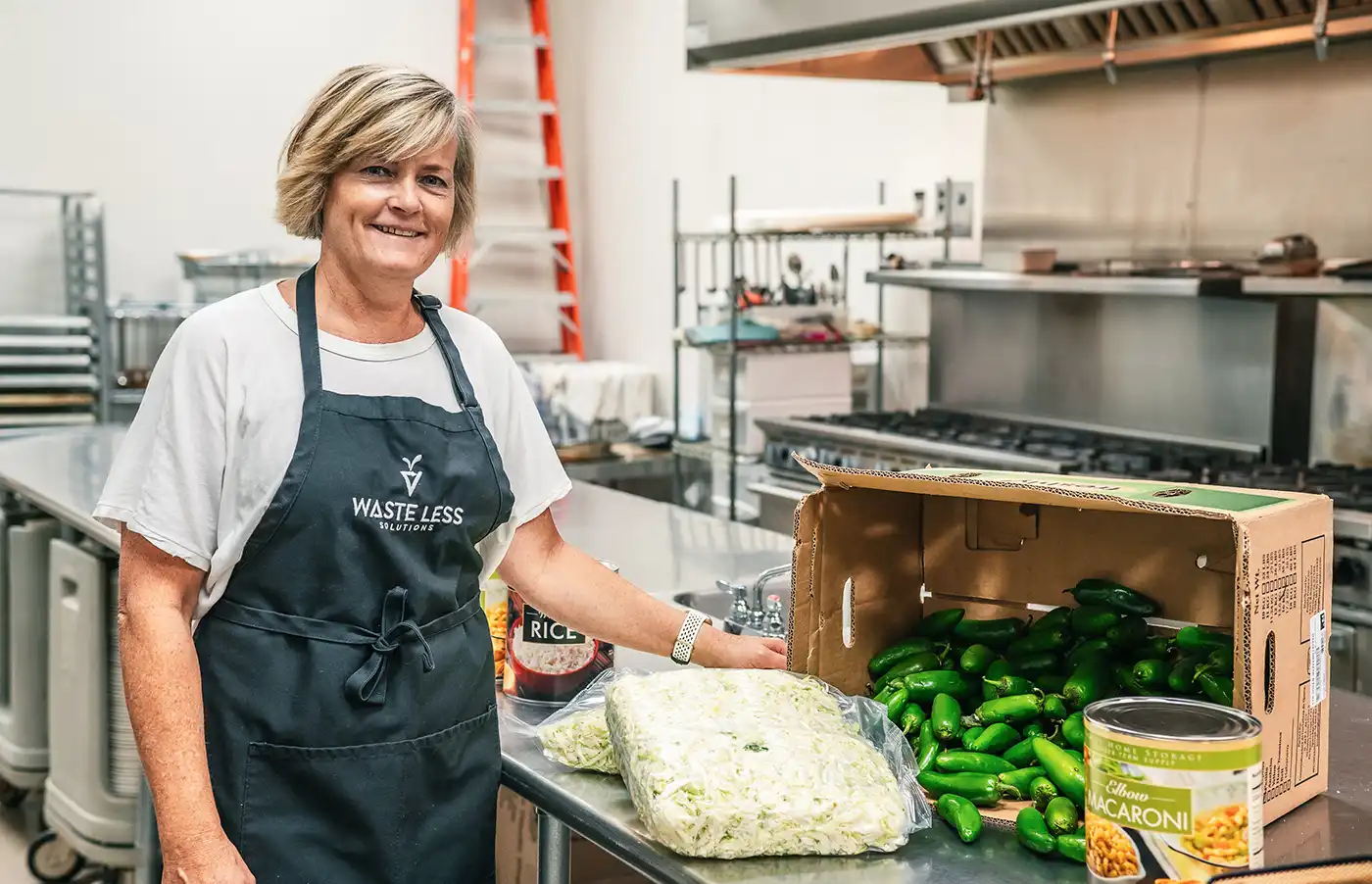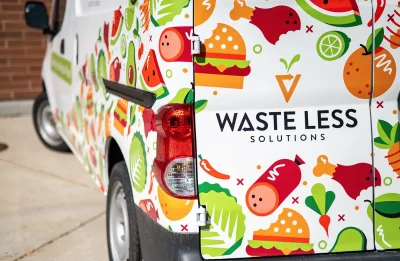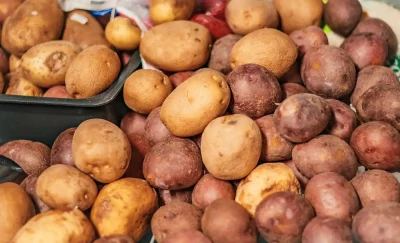
Tossing Out Hunger with Waste Less Solutions
Food: Interviews & Features
Heatwaves are hurting humanity, oceans are beginning to simmer coral reefs and extreme weather leaves behind destruction that can feel overwhelming. Alongside a global climate crisis, those in need struggle for food and housing. While these are complex and daunting challenges, the good news is that setting small and reasonable goals helps to achieve larger ones. “Reducing food waste is one of the best ways to reduce greenhouse gasses,” says Dana Williamson, founder and president of Waste Less Solutions, a local nonprofit dedicated to food waste reduction in Utah.

“Food waste emits methane gas as it rots in landfills,” explains Williamson. “Methane gas is a more potent greenhouse gas than carbon dioxide, meaning food waste can be worse than car emissions.” This is not to mention the climate costs of transportation to distribute food, water used to prepare the food and soil degradation that occurs when growing crops. All of this food waste is piling up while others remain unfed—throwing out last night’s Pad Thai means tossing aside a lot more than just leftovers.
“Shop from your fridge and pantry—use those things first. Plan your meals for the week that way. That will be the most effective and easiest tool to reduce food waste.”
“We have around 400,000 people in Utah going hungry. We can feed people and help the environment,” says Williamson. “[Our] mission is to educate, prevent and divert food waste in Utah.” One of the ways they do this is by rescuing food that would normally go to waste. “We use a smartphone app that can be found at foodrescue.us. We ask for foods we need and map their drop-off locations on the app. We also pick up from caterers, cafeterias, small grocers, restaurants, food distributors and backyard gardens,” Williamson says. Waste Less Solutions then takes that rescued food to various programs and folks in need, sometimes getting creative by using surplus for catering gigs.
Waste Less Solutions also works to distribute fresh food by using high-quality produce and rescued food. Shelf-stable foods are often donated to feed our neighbors in need, but these are high in sodium and processed ingredients. “There’s food insecurity but also nutrition insecurity,” Williamson says. “We can get people healthy food on top of feeding them,” while also helping our environment. Waste Less Solutions doesn’t just rescue food; they also educate people to prevent food waste.
“We have around 400,000 people in Utah going hungry. We can feed people and help the environment.”

Learning how to stop wasting food is crucial. There are two important ways to do this: “Shop from your fridge and pantry—use those things first,” Williamson says. “Plan your meals for the week that way. That will be the most effective and easiest tool to reduce food waste.” Secondly, when you eat out, “take and eat your leftovers. Be mindful of what’s in the fridge,” she says. It’s easy to forget that many of the solutions for climate change can be privileged choices to make such as paying for recycling, affording a vegan diet, buying an electric car or having excess funds to donate. “Reducing food waste is listed in the top three ways of reducing global warming,” she says. Not only are these two easy rules of thumb highly effective, they are accessible for everyone. We can’t un-bake a cake, but together we may be able to un-bake the planet.
Feed people and help the environment by reducing your own food waste, donating excess food or getting involved with your community. “If you have a favorite restaurant, ask them what they do with their food surplus. If they say, ‘Throw it out,’ have them sign up as a food donor,” says Williamson. Waste Less Solutions also rescues from backyard gardens, and folks can “host a cooler on their front porch and register it on the app as a food drop-off [location].”
To get involved with Waste Less Solutions, find them on Facebook or on Instagram @waste_less_solutions. Go to foodrescue.us to download the app.
Read more about solutions for food waste:
Veggie Scraps: Composting with Earthie Crunchie
The Food Waste Place: Wasatch Resource Recovery’s Anaerobic Digester
